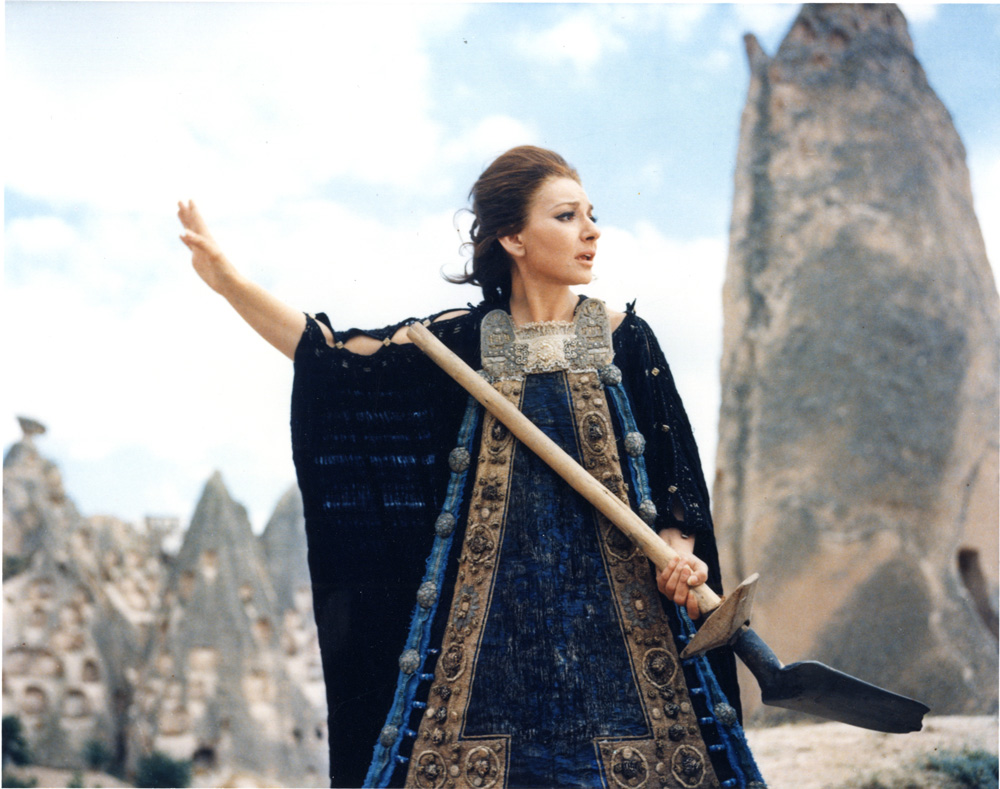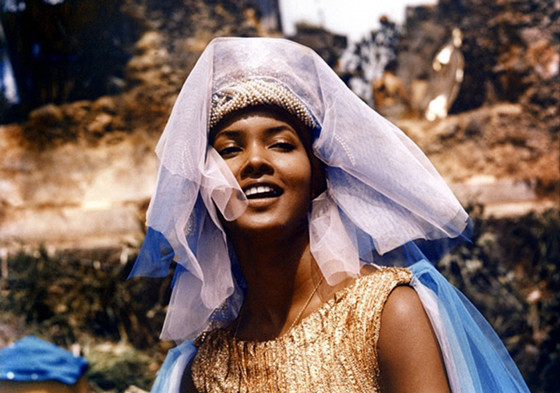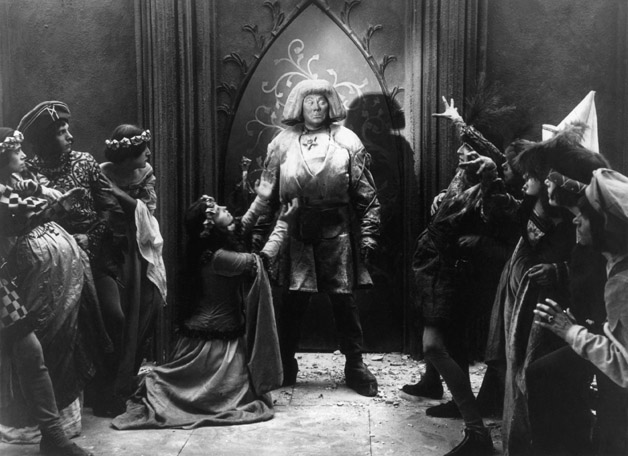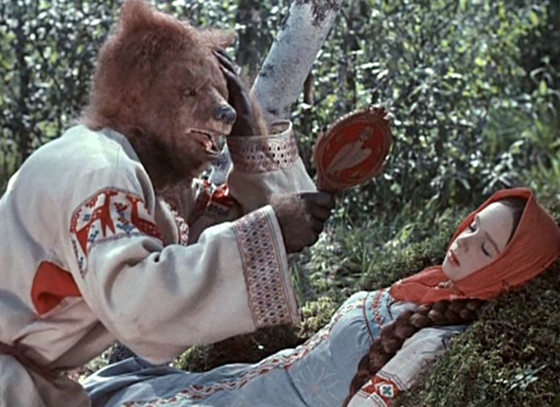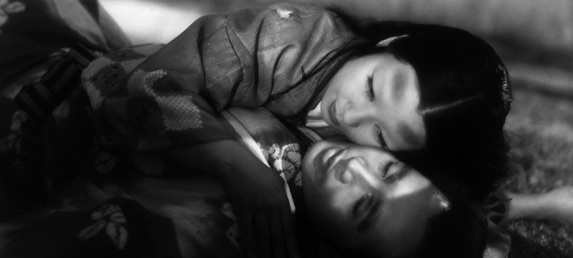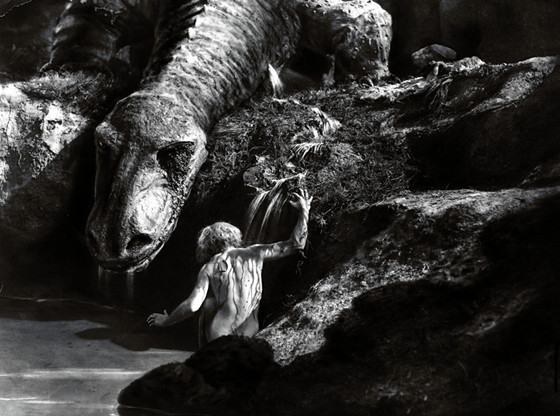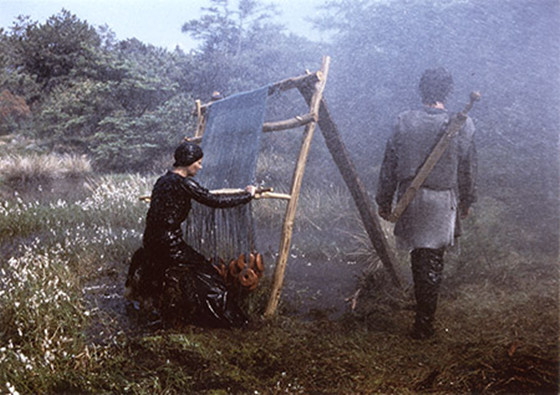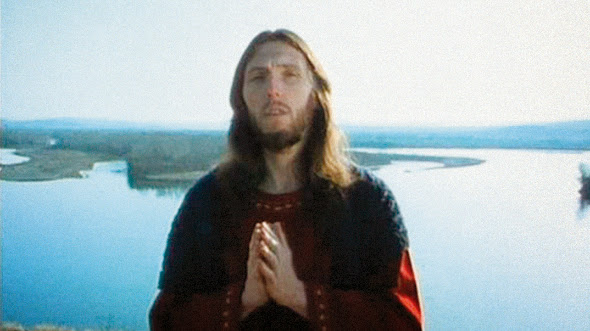Myth, legend and folklore constitute the bedrock of world culture. Strange, then, that they have been so poorly served by the English-speaking cinema community.
For every great film such as a Jason and the Argonauts (1963, Chaffey) or an Excalibur (1981, Boorman), there’s a Troy (2004, Petersen), a Clash of the Titans (2010, Leterrier), a First Knight (1995, Zucker), or a King Arthur (2004, Fuqua): films that in treating the original tales as little more than ripping yarns lose the essence of what made the stories so meaningful in the first place.
With Hollywood especially guilty of treating the mythological as little more than a source of fantastic stories, you have to look to world cinema to find films that treat the legends and myths of the past with the respect they deserve. Whether drawing on indigenous folktales and legends or looking to classical mythology for inspiration, world cinema filmmakers seem much more attuned to that which makes the mythic so powerful and eternally fascinating; their films, consequently, are all the better for it.
In the following list, you’ll find films running from four minute shorts to five hour epics, genres and styles from silent horrors to fantasy musicals, and settings which take the viewer from pre-history Colchis to the gay underground of 1960s Tokyo. Many of the films lean heavily on the timeless tales of Greek mythology, but you’ll also find Okinawan creation myths, Jewish legends, Slavic folktales, as well as stories of witchcraft, vampires and vengeful ghosts from elsewhere in Asia and Europe.
Some of the featured filmmakers adopt a playful approach, others offer more subversive takes, some surrender completely to the strange inner logic of the supernatural folkloric world, and then there are those driven to interrogate the very nature of myth itself; but what unites all their films is that same shared sense of magic and wonder that the best myths, legends or folktales evoke.
This list (given in no particular order) presents twenty-five world cinema films inspired by myth, legend and folklore – all equally remarkable in their own right.
25. Black Orpheus – 1959, Marcel Camus, Brazil/France/Italy
Winner of the Palme d’Or at the 1959 Cannes Film Festival as well as the 1960 Academy Award for Best Foreign Language Film, Black Orpheus is a sun-soaked and sultry take on the Orpheus and Eurydice legend, transporting the story from Ancient Greece to the favelas of modern-day Rio de Janeiro at Carnaval time.
An adaptation of Vinicius de Moraes’s play Orfeu da Conceição, the film could just as easily be mistaken for an extended advertisement for the Brazilian tourism industry, with the first half of Camus’ picture placing as much emphasis on portraying the carnival in full swing as it does on the story of the two lovers.
Jean Bourgoin’s cinematography captures the vibrant costumes and pageantry of the festival in vivid colours that wouldn’t look out of place in one of Powell and Pressburger’s Technicolor extravaganzas, while extended dance scenes are set to a celebrated soundtrack that brought international popularity to bossa nova. Things take a darker turn following the disappearance of Orfeu’s fiancée Eurydice as the guitar-playing, tram driver journeys into the city’s shadowy netherworld in search of his lost love.
24. Der Golem – 1920, Paul Wegener, Germany
Drawn from an ancient Jewish legend about a magically-animated giant fashioned out of clay, Der Golem, wie er in die Welt kam (The Golem: How He Came Into the World) was the third, and only surviving, part of a trilogy of films featuring the golem made by Wegener between 1915 and 1920.
Adapted from a novel by Gustav Meyrink, the film (often simply known as Der Golem) is based on one of the best known golem legends: that of Rabbi Loew and his creation of a giant golem to defend the Jewish population of 16th century Prague following a prophecy of an impending pogrom
Often overshadowed by better-known German Expressionist works such as The Cabinet of Dr. Caligari (1920, Weine) and Nosferatu (1922, Murnau), it is still a key work in the short-lived but hugely influential movement, as well as a prototype for the horror monster genre.
23. L’Île de Calypso: Ulysse et le Géant Polyphème – 1905, Georges Méliès, France
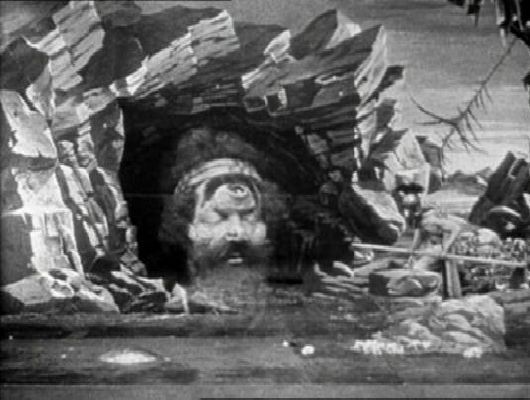
George Méliès was a pioneer of cinema and special effects, best known for his Jules Verne adaptations A Trip to the Moon (1902) and The Impossible Voyage (1904). In an incredible period of less than twenty years Méliès produced over 1500 short films and features, utilising as source material everything from contemporary news events, folk and fairytales, to classical mythology.
Drawn from Greek mythology, the four-minute long Ulysses and the giant Polyphemus is typical of the filmmaker’s playful approach. Combining the Calypso and Cyclops episodes from Homer’s Odyssey, it follows the adventures of Ulysses (or Odysseus) on an enchanted island where he encounters the gigantic, man-devouring Cyclops Polyphemus.
As with many of the French cinemagician’s films, there’s no deep meaning or significance behind it – only a simple desire to entertain and an infectious childlike wonder at the power of a cinema then still in its infancy.
22. Morozko – 1964, Alexander Rou, Russia
Alexander Rou’s fantasy musical Morozko (roughly translating as Frosty, though also going under the titles Jack Frost, Father Frost, and The Crystal Star) takes its title from Ded Moroz, a traditional Russian character analogous to Father Christmas and Jack Frost in the West.
As well as Ded Moroz, the film combines tropes from other popular Russian fairytales – including mushroom pixies, tree-men and the cannibalistic witch Baba Yaga – to tell the tale of Nastenka, a sweet young girl whose cruel stepmother casts her out into the woods to freeze, and her beloved Ivan, a young man from the village who is transformed into a bear by Grandfather Mushroom.
As this short synopsis of Morozko’s highly convoluted plot suggests, it’s an exceedingly strange film (Baba Yaga, for instance, lives in a house perched atop a giant chicken egg), but in tapping into the uncanny, often dark undercurrents of traditional folktales, it remains much truer to the tradition than Disney’s typically euphemised fairytale treatments.
A family film from behind the Iron Curtain, Morozko is as heart-warming as it is wonderfully bizarre, though it does contain elements that may be too frightening for younger viewers.
21. Ugetsu Monogatari – 1954, Kenji Mizoguchi, Japan
Alongside Kurosawa’s Rashomon (1950), Mizoguchi’s jidaigeki (period drama) Ugetsu Monogatari was one of the earliest Japanese films to receive international recognition, receiving a Silver Lion at the 1953 Venice Film Festival.
Based on a pair of tales from Ueda Akinari’s 18th century collection of traditional Japanese and Chinese ghost stories Ugetsu Monogatari (Tales of Moonlight and Rain), the film is set in a Civil War-ravaged 16th century Japan where a potter and an aspiring samurai set out with their wives in search of fortune and fame. The Akinari stories (namely ‘The House Amid the Reeds’ and ‘Lust of the White Serpent’) are combined primarily in the central plotline in which the potter Genjuro is lured from his wife by the ghostly charms of Lady Wakasa.
Ugetsu Monogatari is a profoundly beautiful film. With sumptuous cinematography and meticulously-orchestrated long takes, Mizoguchi’s deeply-moving lyrical masterpiece unfolds with a gracefulness akin to the Noh theatre whose conventions the film occasionally borrows from. While the supernatural elements make it an atypical Mizoguchi production, it’s nevertheless an excellent place to start for newcomers perhaps intimidated by the Japanese director’s vast filmography.
20. Die Niebelungen – 1924, Fritz Lang, Germany/Austria
Die Nibelungen is Lang’s two-part adaptation of The Nibelungenlied, an epic Middle High German poem dating from around 1200 AD and chronicling the exploits of the legendary dragon-slayer Siegfried, his murder at the court of the Burgundians, and the revenge taken by his wife Kriemhild.
Largely an exercise in style and pure storytelling, Die Nibelungen is thematically a world away from the triumphalism of Wagner’s Ring Cycle treatment of the legend.
Lang’s presentation of the hero, for one thing, is quite an ambivalent one. Perhaps in keeping with a major strain of Nibelungenlied scholarship which presents Siegfried more as an aggressor than a hero, there are times when the protagonist is painted in a less than flattering light, such as the scene in which Siegfried slays a rather benign-looking dragon.
Nevertheless, it was inevitable that the story of a pure Germanic hero battling the forces of darkness would later strike a chord with the Nazi Party, whose propaganda minister Joseph Goebbels was busy creating some dark myths of his own.
In a probably apocryphal tale, Lang described how he packed his bags the very same day Goebbels called him in to discuss taking charge of filmmaking for the Nazi regime. Whether or not Lang’s account of the manner of his leaving is strictly accurate, it remains the case that the Austrian filmmaker would not return to Germany until the late 1950s.
An even more visually impressive film than his celebrated Metropolis (1927), Die Nibelungen has arguably been just as influential – virtually all fantasy film cycles from Star Wars to The Lord of the Rings owe a debt to Lang’s two-part epic.
19. Medea – 1988, Lars von Trier, Denmark
Lars von Trier’s pre-Dogme 95 film is based on the myth of Medea, princess of the royal family of Colchis, whose love for the Greek hero Jason led her into helping the Argonauts capture the Golden Fleece from her father King Aeëtes.
The film largely follows Euripides’ play in depicting the aftermath of these events some ten years later: when Jason abandons Medea and their children for Glauce, daughter of King Creon of Corinth, the Colchian princess enacts a terrible revenge culminating in a shocking act of infanticide.
Originally made for Danish television, von Trier’s Medea is an adaptation of the Euripidean tragedy by way of Carl Dreyer, who wrote the original script in the 1960s shortly before his death. While von Trier’s claim to have been in direct telepathic communication with the late great director during filming should be taken with a pinch of salt, Dreyer’s influence is apparent in the film’s glacial pacing as well as in its transcendental feel and look.
Shot entirely on analogue video, the film’s unique visual style was achieved by transferring the video footage to film and then back to video again, producing artfully grainy images that have the quality of faded paintings or inchoate dreams.
Elsewhere can be seen in embryo other film techniques von Trier would employ in later works such as Breaking the Waves (1996), Dancer in the Dark (2000) and Antichrist (2009), while the film’s portrayal of suffering womanhood anticipates what was to become a favourite subject. However, unlike some of his other heroines, von Trier’s Medea is no passive victim, but a vision of chthonic feminine power imbued with the hell-like fury of a woman scorned. A suitably bleak, Nordic take on the Medea myth.
18. Bells from the Deep – 1993, Werner Herzog, Germany
Bells from the Deep: Faith and Superstition in Russia, Herzog’s 1993 documentary about Russian and Siberian mysticism, takes its title from the legend of the lost city of Kitzeh, placed by God at the bottom of a deep lake after the citizens had prayed for protection from an imminent Mongol invasion. According to local folklore, the bells of the city’s church may be heard to this day, tolling from the bottom of the lake where the people of Kitzeh live on in peaceful bliss.
Anyone who has ever seen one of Herzog’s documentaries will be aware of the director’s blending of fact and fiction and his refusal to draw a distinction between his fiction films and documentaries. The opening shot of two people dragging themselves over the top of a frozen lake, apparently pilgrims in search of the sunken city of Kitzeh, is a case in point.
Unable to find any pilgrims on the day of shooting, Herzog simply hired two local drunks (one of whom, his face pressed to the ice as though in deep meditation, was so inebriated he had actually fallen asleep and had to be woken up by the film crew at the end of the take).
Eschewing the ‘accountant’s truth’ of cinéma vérité, this is Herzog’s ‘ecstatic truth’, which he employs in an examination of the power of faith that seeks to go deeper than your average ethnographic study. In an interview with Vissarion, a former policeman with a genuine Messiah complex, Herzog also shows the dangerous side of unbridled faith.
